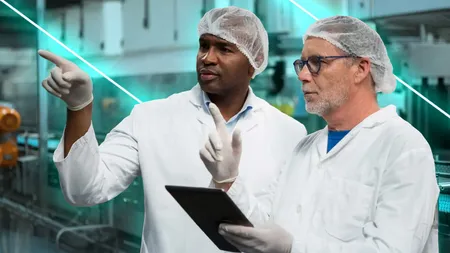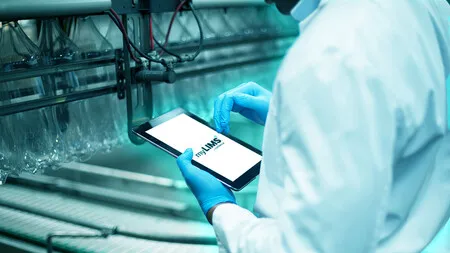August 8, 2025
Achieving Quality Control with LIMS Software
Table of Content

Quality control plays an essential role in ensuring the excellence of products and services in many industries. It is a discipline whose objective is to monitor and evaluate the conformity of products, processes and services with respect to predefined standards to ensure that they meet or exceed customer expectations. In this article, we will explore what quality control is, its importance, and how to manage it effectively.
What is quality control?
Quality control is a set of systematic activities and procedures carried out to ensure that products or services meet established quality requirements. It involves the application of specific methods and techniques to measure and assess the conformity of products and processes in order to identify and correct any deviations or non-conformities.
In addition, quality control involves setting quality standards, establishing metrics and evaluation criteria, conducting tests and inspections, and applying corrective measures when necessary. The ultimate goal is to achieve customer satisfaction, improve operational efficiency, and the reputation of the organization.
The Importance of Quality Control
Quality control plays a crucial role in ensuring customer satisfaction and gaining a competitive advantage in the market. Some of the reasons are:
- Customer Satisfaction: Satisfied customers are essential to the success of any business. Quality control ensures that products and services meet or exceed customer expectations, increasing customer satisfaction and loyalty.
- Cost Reduction: Good quality control helps to identify and correct problems in the early stages, reducing the occurrence of defects and repetitions. This translates into less wasted resources and long-term cost savings.
- Continuous Improvement: Quality control fosters a culture of continuous improvement within the organization. By regularly reviewing processes and identifying opportunities for improvement, companies can optimize their operations and achieve higher levels of quality.
- Reputation and Trust: Good quality control helps build a strong reputation for an organization. When customers trust the quality of the products and services provided, they are more likely to become brand advocates and recommend the company to others.
How to Achieve Quality Control with a LIMS System
A Laboratory Information Management System (LIMS) plays a key role in quality control in laboratories. It is lab management software designed to manage and control all information related to samples, analyses, and laboratory processes.
Here’s how a LIMS helps improve quality control:
- Sample Tracking: A modern LIMS allows for complete tracking of the life cycle of samples, from collection to disposal. It records information such as the date and time of collection, the identification of the customer, the manipulations carried out, and the analyses carried out. This helps prevent misidentification and ensure the integrity of the samples.
- Control of Documents and Procedures: LIMS software allows laboratories to maintain strict control of all documents and procedures related to quality control. This includes test specifications, analysis protocols, calibration certificates, and work instructions, among others. The system facilitates access to these documents and their updating, ensuring that everyone involved has access to the latest information.
- Analytics Data Management: A LIMS system is capable of storing and managing large volumes of analysis data. You can receive data directly from lab instruments, eliminating the need for manual data entry and reducing errors. The data is organized in a structured way and can be easily queried, filtered, and analyzed. This helps identify trends, detect deviations, and generate quality control reports.
- Traceability and Compliance: A LIMS system provides traceability capabilities and compliance with applicable regulations and standards. It maintains detailed records of all steps of the analytical process, including the reagents and materials used, the operators responsible, and the environmental conditions. This is essential for internal and external audits, as well as for meeting regulatory requirements such as ISO 17025.
- Equipment Control and Calibrations: A LIMS system allows you to manage laboratory equipment, including maintenance, calibration, and certificate records. It can send automatic reminders of scheduled calibrations and maintenance, ensuring equipment is compliant and operates properly. This contributes to the reliability of test results and overall laboratory quality control.
- Management of Non-conformities: In the event of any non-compliance during laboratory analyses or processes, the LIMS system allows the recording, monitoring, and resolution of such incidents. This includes corrective and preventive actions, root cause investigation, and monitoring of implemented solutions. A LIMS helps ensure that non-conformities are dealt with appropriately, and that steps are taken to prevent them from recurring.
Conclusion
Quality control plays a key role in the pursuit of excellence and customer satisfaction. By implementing an effective system, companies can reduce costs, improve operational efficiency, and strengthen their reputation in the marketplace.
Achieving lasting quality control starts with clear standards, thorough staff training, and consistent inspection and testing. Ongoing monitoring, swift corrective actions, and strong supplier collaboration keep your processes sharp and your outcomes reliable. With these steps in place, your organization is set for long-term success.
Ultimately, a LIMS system contributes to improved quality control in laboratories by providing a centralized platform for managing laboratory data, documents, samples, and processes. It helps improve efficiency, traceability, and compliance, ensuring the reliability and quality of analytical results.
Next steps:
If your lab still uses spreadsheets, paper, or disconnected processes, it's time to rethink quality management.
The implementation of a digital system such as Confience myLIMS can be the first step to transform quality control into a strategic sector within your operation.
Best-in-class LIMS
Built for your success
See what makes Confience different. Speak with a member of our team.
Schedule a Demo







